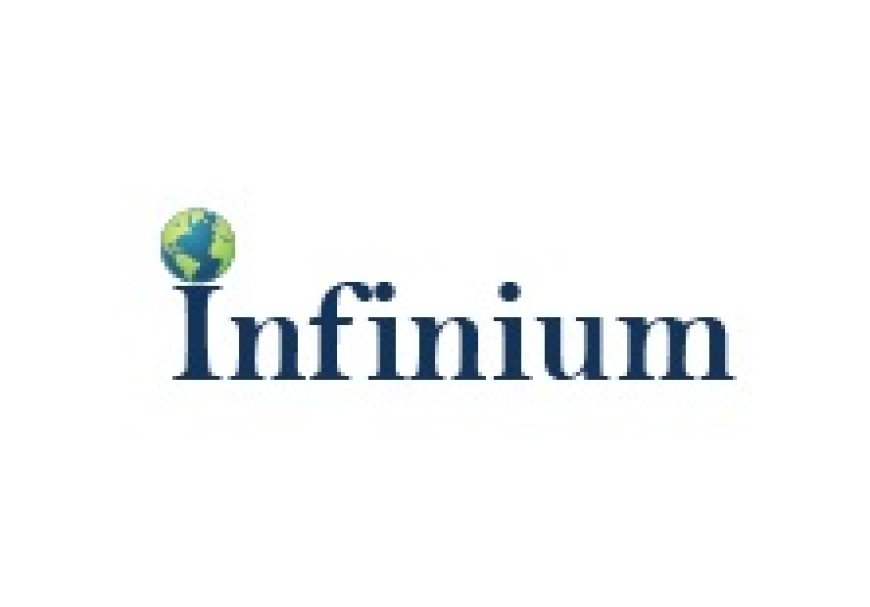Gasoline Direct Injection System Market Analysis Reveals Key Trends and Forecasts for the Next Decade
The Infinium Global Research analyzes the Intravenous System Access Devices Market over the period of 2024 to 2032.

The Infinium Global Research analyzes the Intravenous System Access Devices Market over the period of 2024 to 2032. This report also provides detailed qualitative and quantitative analyses of the market dynamics, market size and future trends in global intravenous system access devices market. It will help a lot of decision makers to develop strategies and find new opportunities in the global markets of intravenous system access devices. The report covers market changing aspects including drivers, restraints, opportunities, and trends expected to encouragement the expansion of the intravenous system access devices market during the period.
Download Sample PDF Copy: https://www.infiniumglobalresearch.com/reports/sample-request/1070
The Gasoline Direct Injection (GDI) system represents a significant advancement in fuel injection technology, offering substantial improvements over traditional port fuel injection methods. Unlike the latter, which delivers fuel into the intake tract or cylinder at lower pressures, GDI systems use highly pressurized gasoline injected directly into the combustion chamber. This approach enhances power output, fuel efficiency, and enables ultra-clean fuel combustion. The increased efficiency and performance provided by GDI systems have led to their widespread adoption in modern two-stroke and four-stroke engines, contributing to their growth in the automotive market.
The market for GDI systems is projected to expand rapidly due to several key factors. Enhanced engine performance, fuel efficiency, and the ability to meet stringent emission standards drive demand. The rise in engine downsizing, turbocharging, and the use of alternative fuels like ethanol further supports the adoption of GDI technology. Innovations in turbo GDI systems and their integration into hybrid vehicles are creating new opportunities for market growth. These advancements help manufacturers meet evolving emission regulations and consumer demands for high-performance, fuel-efficient vehicles across various segments, including passenger cars, light trucks, and SUVs.
However, the GDI system market faces notable challenges that could impact its growth. Issues related to particulate emissions and carbon deposits can affect engine performance and longevity, necessitating ongoing R&D to optimize fuel injection and combustion processes. Additionally, the complexity and high cost of GDI components, such as high-pressure pumps and electronic controls, pose maintenance and manufacturing challenges. The shift towards electric and hybrid vehicles also threatens the long-term growth prospects of GDI systems. Addressing these challenges will require collaborative efforts between manufacturers, automotive OEMs, and regulatory bodies to enhance system performance and adapt to emerging technologies, ensuring GDI systems remain a viable option in the evolving automotive landscape.
Market Trends:
· Global Expansion: Companies are actively entering new markets to capitalize on growth opportunities.
· Sustainability Focus: Increased emphasis on eco-friendly materials, processes, and waste reduction.
· Digital Transformation: Adoption of AI, IoT, and blockchain to improve efficiency, innovation, and customer experience.
· Health and Wellness Trend: Growing demand for functional and nutritious products, as well as health-focused features.
Market Dynamics
Infinium Global Research's recent report delves into the key factors driving the rapid growth of the global Gasoline Direct Injection (GDI) System market. The study meticulously examines a range of elements including market trends, government policies, product launches, regulations, geographical factors, market competition, and supply chain dynamics to identify the primary growth drivers. This information is invaluable for businesses and investors seeking to align their strategies with market demands.
The report also provides a comprehensive analysis of market restraints, such as government regulations, trade policies, economic conditions, market entry barriers, consumer spending patterns, and product demand. By understanding these challenges, stakeholders can assess their potential impact on market growth and develop effective countermeasures.
Furthermore, the research highlights key opportunities for market expansion. Through in-depth analysis of market conditions, mergers and acquisitions, R&D investments, technological advancements, marketing strategies, and consumer behavior, the report identifies promising areas for growth. This information empowers businesses to capitalize on emerging trends and make informed strategic decisions.
Market Segmentation
· Engine type: The market includes I3, I4, V6, V8, and other engine configurations.
· GDI support technologies: Gasoline particulate filters (GPF) and gasoline turbochargers are primary support technologies.
· Vehicle type: The market encompasses both passenger and commercial vehicles.
· Sales channel: GDI systems are distributed through both original equipment manufacturers (OEMs) and the aftermarket
Competitive Landscape
Continental AG, Hitachi, Ltd., Delphi Automotive LLP, DENSO CORPORATION, Robert Bosch GmbH, Stanadyne, Keihin Corporation, Magneti Marelli S.p.A., Renesas Electronics Corporation., and Park-Ohio Holdings Corp.
Report Overview: https://www.infiniumglobalresearch.com/reports/global-gasoline-direct-injection-market
Future Outlook:
The Gasoline Direct Injection (GDI) system market is poised for significant growth as automotive manufacturers increasingly adopt this technology to meet stringent emission regulations and enhance fuel efficiency. Advancements in GDI technology, such as improved injector designs and electronic control systems, are expected to drive market expansion. Additionally, the rise of hybrid and electric vehicles, which incorporate advanced GDI systems, will further propel demand. As consumer preferences shift towards more fuel-efficient and eco-friendly vehicles, the GDI system market is likely to witness sustained innovation and investment.
Conclusion:
In conclusion, the GDI system market is set to experience robust growth due to its critical role in optimizing engine performance and reducing emissions. The continual development of technology and increasing regulatory pressures will drive adoption across the automotive industry. As the market evolves, stakeholders should focus on technological advancements and regulatory compliance to capitalize on emerging opportunities and maintain competitive advantage.












